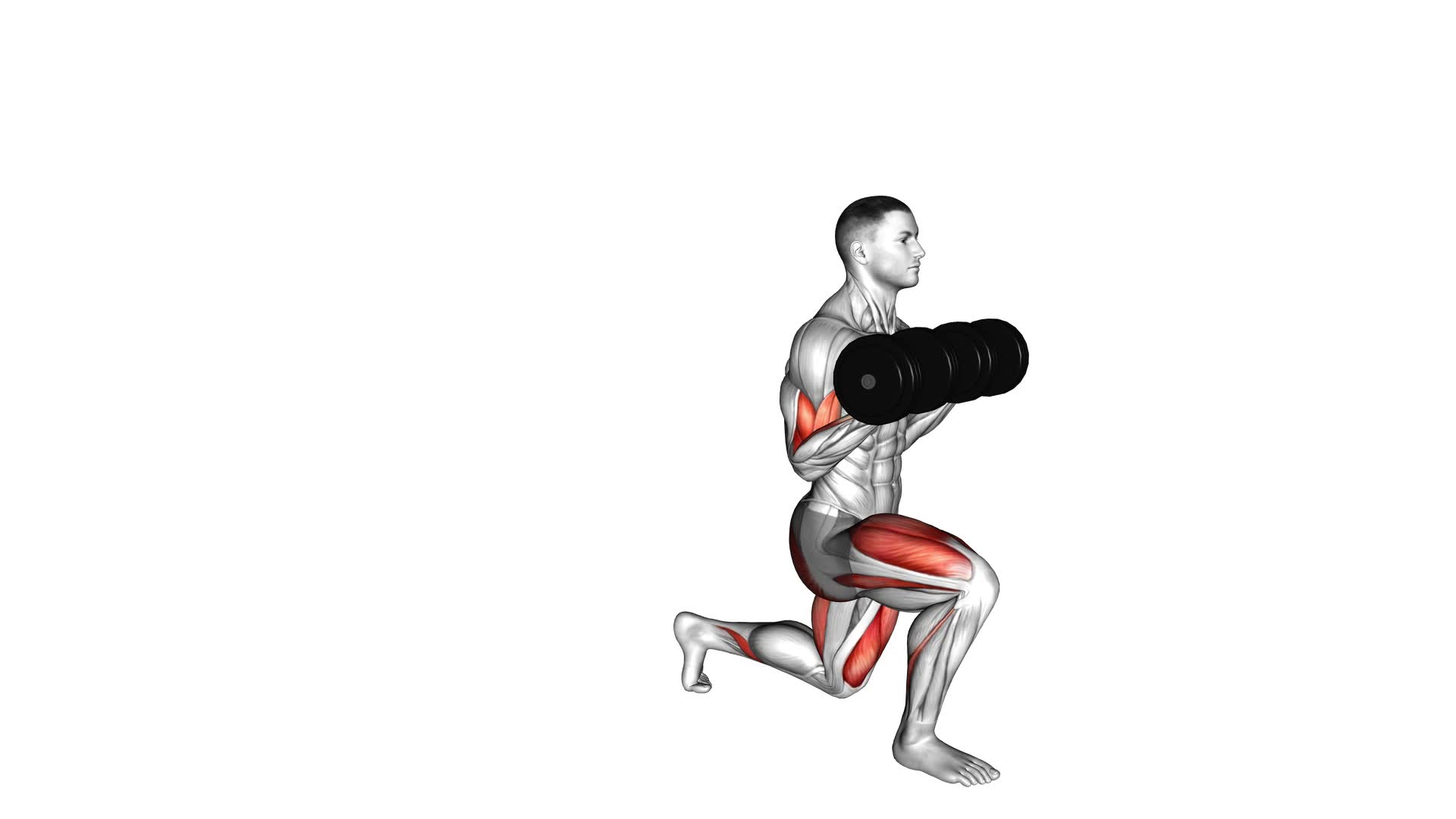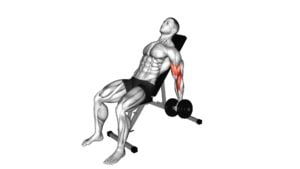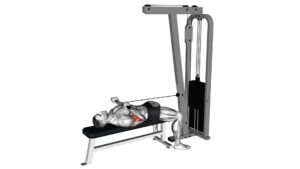Dumbbell Lunge With Bicep Curl – Video Exercise Guide & Tips

Are you looking to tone your legs and arms at the same time? Then the dumbbell lunge with bicep curl is the exercise for you.
Watch This Exercise Video
This compound movement targets multiple muscle groups, giving you maximum results in less time.
In this video exercise guide, you'll learn the proper form and technique, along with helpful tips to avoid common mistakes and injuries.
So grab your dumbbells and get ready to lunge and curl your way to a stronger, more sculpted body.
Key Takeaways
- Maintain proper form and technique throughout the exercise
- Choose an appropriate weight to avoid compromising form and straining joints
- Engage core and keep back straight to protect lower back
- Emphasize muscle engagement during the lunge and bicep curl
Proper Form and Technique
To perform the dumbbell lunge with bicep curl correctly, you should maintain proper form and technique throughout the exercise. This won't only optimize your results but also prevent common mistakes and reduce the risk of injury.
One common mistake is letting your knees go past your toes during the lunge. To avoid this, make sure to take a step forward that's big enough to keep your knee directly above your ankle.
Another mistake is using too heavy of a weight, which can compromise your form and put unnecessary strain on your joints. Start with a lighter weight and gradually increase as your strength improves.
In terms of injury prevention, it's crucial to engage your core and keep your back straight throughout the exercise. This will help stabilize your body and protect your lower back from injury.
Additionally, be mindful of your posture during the bicep curl portion of the exercise. Keep your elbows close to your body and avoid swinging the weights to prevent strain on your shoulders and wrists.
Benefits of the Dumbbell Lunge With Bicep Curl
You can experience increased strength and muscle development with the dumbbell lunge with bicep curl exercise.
Here are three benefits of combining lunges and bicep curls:
- Full-body workout: The dumbbell lunge with bicep curl engages multiple muscle groups simultaneously. Lunges target the muscles in your lower body, including the glutes, quadriceps, hamstrings, and calves. Meanwhile, bicep curls work your biceps, forearms, and shoulders. By combining these two exercises, you can effectively work your upper and lower body at the same time, resulting in a more efficient and comprehensive workout.
- Improved balance and stability: Lunges require proper balance and stability, and adding the bicep curl element to the exercise further challenges your core muscles. This combination helps improve your overall balance and stability, which is important for everyday activities and sports performance.
- Increased calorie burn: The dumbbell lunge with bicep curl is a compound exercise that targets large muscle groups. This means that it requires more energy and burns more calories compared to isolation exercises. By incorporating this exercise into your routine, you can boost your calorie burn and contribute to weight loss or weight maintenance goals.
Equipment Needed for the Exercise
To perform the dumbbell lunge with bicep curl exercise, you'll need a set of dumbbells. Necessary gear for this exercise includes a pair of dumbbells that you can grip comfortably and securely. It's recommended to choose dumbbells that are appropriate for your fitness level and strength.
If you're a beginner, start with lighter weights and gradually increase as you become more comfortable and stronger. On the other hand, if you're more experienced, you can opt for heavier weights to challenge yourself and maximize the benefits of the exercise.
When selecting the dumbbell weight, consider your current fitness level and the target muscles you want to work. The weight should be heavy enough to provide resistance, but not so heavy that it compromises your form or causes strain. It's always better to start with lighter weights and gradually increase as you progress. This will help you maintain proper form and reduce the risk of injury.
Now that you have your dumbbells ready, let's move on to the step-by-step guide to perform the dumbbell lunge with bicep curl exercise.
Step-by-Step Guide to Perform the Dumbbell Lunge With Bicep Curl
To perform the dumbbell lunge with bicep curl effectively, it's crucial to focus on your form and technique.
This exercise targets multiple muscle groups, including the quadriceps, glutes, hamstrings, and biceps. By maintaining proper form and engaging the targeted muscles, you can maximize the benefits of this compound exercise and avoid potential injuries.
Form and Technique Importance
How can you ensure proper form and technique while performing the Dumbbell Lunge With Bicep Curl? Paying attention to your form is crucial to maximize the benefits of this exercise and prevent injury. Here are three key points to keep in mind:
- Maintain proper alignment: Stand with your feet hip-width apart, back straight, and shoulders relaxed. Keep your core engaged throughout the exercise to stabilize your body.
- Control the movement: Slowly lower your body into a lunge, making sure your front knee doesn't extend past your toes. As you curl the dumbbells towards your shoulders, keep your elbows close to your body and avoid swinging your arms.
- Focus on muscle engagement: During the lunge, emphasize using your front leg to push yourself back up. Additionally, squeeze your biceps at the top of the curl to fully activate the muscle.
Muscle Groups Targeted
To effectively target multiple muscle groups and perform the Dumbbell Lunge With Bicep Curl with proper form, you need to understand the step-by-step guide.
This exercise primarily targets the quadriceps, hamstrings, glutes, and biceps.
The lunge portion of the exercise activates the quadriceps and hamstrings, as well as the glutes for stability and balance.
Meanwhile, the bicep curl targets the biceps, specifically the biceps brachii, which is responsible for flexing the elbow joint.
When selecting the appropriate weight for this exercise, it's important to choose a weight that challenges you but allows you to maintain proper form throughout the movement.
Start with a lighter weight and gradually increase the weight as you become more comfortable and stronger.
Tips to Avoid Common Mistakes and Injuries
To avoid common mistakes and injuries, focus on maintaining proper form and alignment during the dumbbell lunge with bicep curl exercise. Here are three important tips to help you prevent injury and maximize the effectiveness of this exercise:
- Maintain a stable core: Engaging your core muscles throughout the exercise will help you maintain balance and stability. Keep your abs tight and your back straight to protect your spine and prevent strain on your lower back.
- Keep your knees in line with your toes: As you lunge forward, make sure your knees are aligned with your toes, and avoid allowing them to collapse inward. This will help prevent knee injuries and ensure that you're engaging the correct muscles.
- Control the movement: It's important to perform the exercise in a controlled manner, avoiding any jerking or swinging motions. Focus on using the muscles in your legs and biceps to perform the movement, rather than relying on momentum. This won't only reduce the risk of injury but also increase the effectiveness of the exercise.
Variations and Modifications for Different Fitness Levels
Now let's talk about some variations and modifications you can make to the dumbbell lunge with bicep curl exercise to accommodate different fitness levels.
For beginners, you can start by using lighter weights or even just bodyweight to focus on proper form and technique.
If you're more advanced and looking for a challenge, you can increase the weight or add a jump lunge for an extra plyometric element.
Lastly, don't forget to tailor the exercise to your specific abilities and goals, whether that means adjusting the range of motion or incorporating balance challenges.
Beginner-Friendly Modifications
Start with lighter weights when performing the dumbbell lunge with bicep curl to ensure proper form and avoid injury. As a beginner, it's important to focus on mastering the basic movement before progressing to heavier weights. Here are some beginner-friendly modifications and alternative exercises to help you get started:
- Bodyweight Lunges with Bicep Curl: If using dumbbells is too challenging, you can begin by performing lunges without weights. Focus on maintaining good form and adding a bicep curl at the bottom of each lunge to engage your arms.
- Standing Bicep Curls: If lunges are too difficult initially, you can start by solely focusing on the bicep curls. Stand with your feet hip-width apart and curl the dumbbells up towards your shoulders, keeping your elbows close to your body.
- Reverse Lunges: Instead of stepping forward into a lunge, try stepping backward. This modification can help improve balance and stability while still engaging your leg muscles.
Advanced Intensity Variations
To increase the difficulty and challenge of the dumbbell lunge with bicep curl exercise, you can incorporate advanced intensity variations based on your fitness level.
These advanced modifications are designed to push your limits and maximize your gains.
One challenging variation is to add a jump at the end of each lunge, which not only increases the cardiovascular demand but also engages more muscles in your lower body.
Another option is to increase the weight of the dumbbells, allowing for a greater resistance and forcing your muscles to work harder.
Additionally, you can try performing the exercise on an unstable surface, such as a Bosu ball or a balance board, to engage your core muscles and improve your balance.
Remember to always listen to your body and progress gradually to avoid overexertion or injury.
Tailoring for Specific Abilities
To tailor the dumbbell lunge with bicep curl exercise for specific abilities, you can make variations and modifications based on your fitness level. Customizing workouts and adapting exercises are essential to ensure that you challenge yourself appropriately and avoid injury. Here are three ways you can modify the dumbbell lunge with bicep curl exercise:
- Use lighter weights: If you're a beginner or have limited upper body strength, start with lighter dumbbells or even just bodyweight. Focus on mastering the proper form and gradually increase the weight as you get stronger.
- Adjust the range of motion: If you have knee or hip issues, you can reduce the depth of the lunge or use a stability aid like a chair to support yourself. This modification allows you to still engage your muscles while minimizing stress on your joints.
- Increase the intensity: For advanced fitness levels, you can add difficulty by using heavier weights or incorporating a jump into the lunge. This variation challenges your muscles and cardiovascular system, taking the exercise to the next level.
Frequently Asked Questions
How Many Sets and Reps Should I Do for the Dumbbell Lunge With Bicep Curl?
To determine the sets and reps for the dumbbell lunge with bicep curl, consider your fitness level and goals. Start with 3 sets of 10-12 reps, using a weight that challenges you but allows proper form.
Remember to warm up before starting and modify the exercise as needed. Variations include alternating lunges and using different grip positions for the bicep curl.
Alternative exercises include lunges with resistance bands or kettlebells.
Can I Perform the Dumbbell Lunge With Bicep Curl Using a Barbell Instead of Dumbbells?
Yes, you can perform the dumbbell lunge with bicep curl using a barbell instead of dumbbells. While the barbell may offer a different grip and stability challenge, it can still effectively target your legs and biceps.
However, using dumbbells allows for greater range of motion and unilateral work, enhancing stability and muscle activation.
The benefits of the dumbbell lunge with bicep curl include strengthening your lower body, improving balance, and building arm muscles simultaneously.
Is It Necessary to Warm up Before Doing the Dumbbell Lunge With Bicep Curl?
It's important to warm up before performing the dumbbell lunge with bicep curl. This helps to prepare your muscles and joints for the exercise and reduce the risk of injury.
A proper warm-up can include dynamic stretches and light cardio exercises.
If you're a beginner, you can modify the dumbbell lunge with bicep curl by using lighter weights or performing the exercise without weights.
As you progress, you can gradually increase the intensity and weight.
Can I Incorporate the Dumbbell Lunge With Bicep Curl Into a Full-Body Workout Routine?
Yes, you can definitely incorporate the dumbbell lunge with bicep curl into a full-body workout routine. It's a compound exercise that targets multiple muscle groups, making it an efficient and effective addition to your workout.
Are There Any Alternative Exercises That Target the Same Muscle Groups as the Dumbbell Lunge With Bicep Curl?
If you're looking for alternative exercises that target the same muscle groups as the dumbbell lunge with bicep curl, there are a couple of options.
One is the Bulgarian split squat with hammer curl, which works your quads, glutes, and biceps.
Another option is the walking lunge with hammer curl, which also engages those same muscles.
These exercises can be effective in your full-body workout routine and provide a similar challenge to the dumbbell lunge with bicep curl.
Conclusion
The dumbbell lunge with bicep curl is a compound exercise that targets multiple muscle groups in the lower body and arms. It can help improve strength, stability, and coordination.
By combining the lunge and bicep curl, you can maximize your workout and save time. Remember to maintain proper form and technique to avoid injuries.
With variations and modifications available, this exercise can be tailored to different fitness levels. Incorporate the dumbbell lunge with bicep curl into your routine for a challenging and effective workout.

Author
Years ago, the spark of my life’s passion ignited in my mind the moment I stepped into the local gym for the first time. The inaugural bead of perspiration, the initial endeavor, the very first surge of endorphins, and a sense of pride that washed over me post-workout marked the beginning of my deep-seated interest in strength sports, fitness, and sports nutrition. This very curiosity blossomed rapidly into a profound fascination, propelling me to earn a Master’s degree in Physical Education from the Academy of Physical Education in Krakow, followed by a Sports Manager diploma from the Jagiellonian University. My journey of growth led me to gain more specialized qualifications, such as being a certified personal trainer with a focus on sports dietetics, a lifeguard, and an instructor for wellness and corrective gymnastics. Theoretical knowledge paired seamlessly with practical experience, reinforcing my belief that the transformation of individuals under my guidance was also a reflection of my personal growth. This belief holds true even today. Each day, I strive to push the boundaries and explore new realms. These realms gently elevate me to greater heights. The unique combination of passion for my field and the continuous quest for growth fuels my drive to break new ground.







